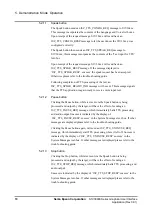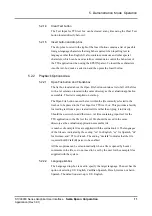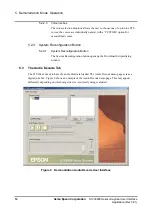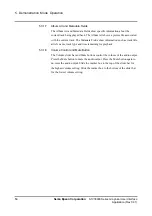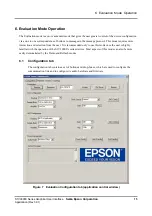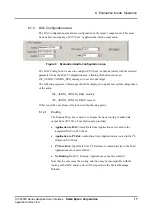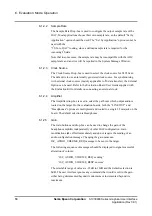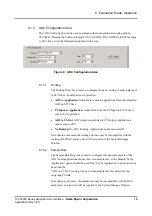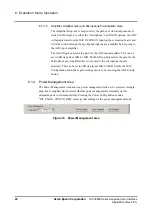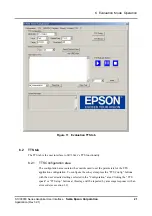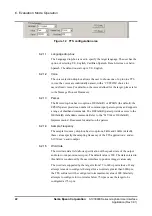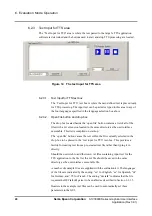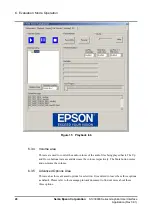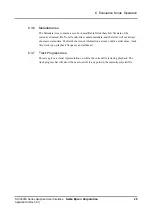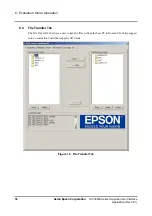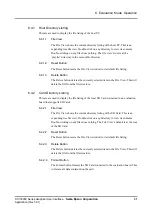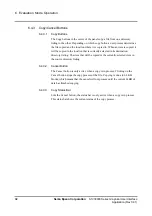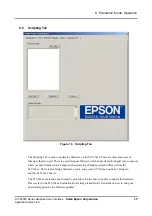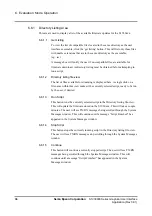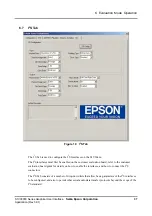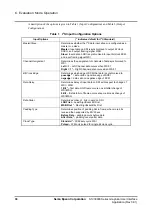
6. Evaluation Mode Operation
6.2.1.6
TTS Configure button
The “TTS config” button is used to send an ‘ISC_TTS_CONFIG_REQ’
message to S1V30xxx. This message causes the TTS application to be
configured with the parameters specified in the configuration area. A successful
configuration will be indicated in the System Messages text-box through the
following sequence of messages:
‘ISC_TTS_CONFIG_REQ : sending’
‘ISC_TTS_CONFIG_RESP : success’
If this is not the case please refer to the trouble-shooting guide.
6.2.1.7
TTS Reset button
The “TTS Reset” button is use to send an ‘ISC_TTS_STOP_REQ’ message to
the S1V30xxx. This message causes the TTS application to reset the
configuration parameters specified in the configuration area. A successful reset
will be indicated in the System Messages text-box through the following
sequence of messages:
‘ISC_TTS_STOP_REQ : sending’
‘ISC_TTS_STOP_RESP : success’
If this is not the case please refer to the trouble-shooting guide.
6.2.2
Voice customisation area
Figure 13 Evaluation Voice Customisation Area
The voice customisation area contains a drop-box which allows selection of one of the
user-defined speaker definition files in the same directory as the executable (the file
extension for this format is “.spd”). A warning message will appear upon entering the TTS
tab if there are no speaker definition files available and voice customisation functionality
will then be disabled.
To select a customised voice, click on the drop down box, choose from the list and click on
the button labeled “Select Custom Voice”. This has the effect of sending a message to the
target specifying the parameters associated with its custom voice. Before the effect of this
selection can be heard, it will be necessary to configure the target to use the CUSTOM
voice as described in section 6.2.1.
S1V30000 Series Graphical User Interface
Seiko Epson Corporation 23
Application (Rev 3.01)


